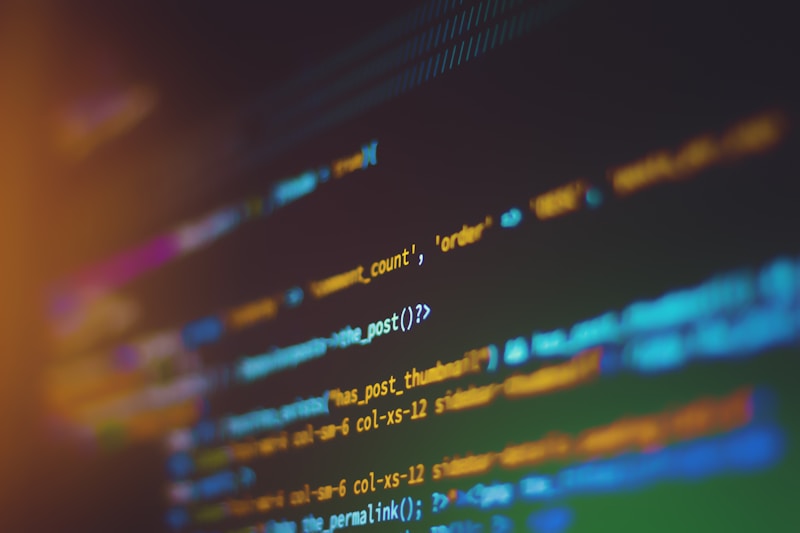In today's academic landscape, the rise of AI writing tools has created new challenges for educational institutions worldwide. SafeAssign, a widely-used plagiarism detection tool integrated into Blackboard Learning Management System, has become a critical line of defense against academic dishonesty. But the burning question remains: does SafeAssign detect AI content effectively? This comprehensive guide explores SafeAssign's AI detection capabilities, its mechanisms, accuracy levels, and what students and educators need to know about this evolving technology.
As artificial intelligence writing assistants become increasingly sophisticated, understanding how SafeAssign detects AI-generated text has never been more crucial. Whether you're a student ensuring your work meets academic integrity standards or an educator seeking to maintain fairness in assessment, this article provides essential insights into SafeAssign's AI detection mechanisms, their effectiveness, and practical implications for academic work.
Overview of Does SafeAssign Detect AI Content
SafeAssign has evolved significantly since its inception as a simple plagiarism checker. Today, it employs multiple sophisticated algorithms designed to identify not just copied content, but also text potentially generated by artificial intelligence. The tool analyzes submitted documents through various detection layers, comparing them against extensive databases while simultaneously scanning for patterns typical of AI-generated content.
The primary function of SafeAssign in detecting AI content relies on pattern recognition and statistical analysis. When a document is submitted, SafeAssign examines writing patterns, sentence structures, vocabulary usage, and stylistic elements that often characterize AI-generated text. These patterns include unusually consistent paragraph lengths, repetitive transitional phrases, and certain formulaic expressions commonly produced by language models.
However, it's important to note that SafeAssign's AI detection capabilities are not foolproof. The tool operates on probability rather than certainty, meaning it provides likelihood scores rather than definitive judgments. This approach helps minimize false positives while maintaining reasonable detection accuracy. Educational institutions typically use these scores as indicators for further review rather than automatic proof of AI usage.
How SafeAssign Detects AI-Generated Text
Understanding the mechanisms behind SafeAssign's AI detection helps both students and educators navigate this technology effectively. The system employs multiple interconnected methods to identify potentially AI-generated content, each with its own strengths and limitations.
Plagiarism Detection Mechanisms (Explanation, advantages, limitations, safety considerations)
Explanation: SafeAssign's foundational plagiarism detection mechanism compares submitted texts against a vast database containing billions of pages from academic papers, institutional document archives, and internet sources. This comparison process identifies matching phrases, sentences, and paragraphs, calculating an overall similarity percentage.
Advantages: The plagiarism detection component excels at identifying direct copying from existing sources. It can detect paraphrased content when structural similarities remain evident, and it continuously updates its database to include new academic submissions. This creates a growing repository that becomes more effective over time.
Limitations: Traditional plagiarism detection struggles with completely original AI-generated content that doesn't exist in any database. Additionally, sophisticated paraphrasing tools can sometimes evade detection by significantly altering sentence structures while maintaining meaning.
Safety Considerations: Users should be aware that all submitted documents become part of SafeAssign's institutional database unless specifically excluded. This raises privacy concerns for proprietary research or sensitive information. Institutions must clearly communicate their data retention policies and provide options for excluding certain submissions from the global database when appropriate.
Algorithmic Analysis for AI Writing Patterns (Explanation, advantages, limitations, safety considerations)
Explanation: SafeAssign employs sophisticated algorithms specifically designed to identify writing patterns characteristic of AI-generated text. These algorithms analyze linguistic features such as perplexity (how predictable the text is), burstiness (variation in sentence complexity), and semantic coherence patterns that differ between human and AI writing.
Advantages: Algorithmic pattern analysis can detect subtle indicators of AI generation that humans might miss. It examines statistical distributions of word choices, sentence lengths, and paragraph structures that often reveal AI authorship. The system can identify overuse of certain transitional phrases, unnaturally consistent formatting, and the absence of personal voice or subjective expressions typical in human writing.
Limitations: As AI models improve, distinguishing between human and AI writing becomes increasingly challenging. Advanced language models can now mimic human writing styles effectively, including intentional imperfections. Furthermore, collaborative writing where humans edit AI-generated content creates hybrid texts that are particularly difficult to classify accurately.
Safety Considerations: The algorithmic analysis must balance sensitivity with specificity to avoid falsely flagging legitimate human writing. Students with consistent writing styles or those following strict academic templates might trigger false positives. Institutions should establish clear appeal processes and human review protocols for contested results.
Database Matching and Content Comparison (Explanation, advantages, limitations, safety considerations)
Explanation: SafeAssign's database matching system cross-references submitted content with known AI-generated text samples, academic papers, and web content. This comprehensive comparison includes checking against previously identified AI-written assignments and maintaining a growing catalog of AI writing patterns from various language models.
Advantages: The extensive database provides broad coverage across multiple disciplines and writing styles. Real-time internet crawling capabilities allow SafeAssign to identify content from recent online sources, including AI-generated articles and essays. The system's ability to compare against institutional repositories helps identify recycled AI content within specific academic communities.
Limitations: Database matching cannot detect entirely original AI content that hasn't been previously indexed. The system may struggle with specialized technical writing or niche subjects with limited reference materials. Additionally, legitimate citations and commonly used academic phrases can inflate similarity scores, requiring careful human interpretation.
Safety Considerations: Privacy and intellectual property concerns arise when student work is permanently stored in databases. Institutions must ensure compliance with data protection regulations and provide transparency about how student submissions are used, stored, and shared. Options for opting out of global database inclusion should be clearly communicated.
Accuracy and Limitations in AI Detection
The accuracy of SafeAssign in detecting AI-generated content varies significantly depending on multiple factors. Current estimates suggest detection rates between 40-70% for standard AI-generated text, with accuracy declining as AI models become more sophisticated. Understanding these limitations is crucial for appropriate interpretation and use of SafeAssign reports.
One significant challenge is the evolving nature of AI writing technology. As language models improve, they produce text that increasingly mimics human writing patterns, making detection more difficult. SafeAssign must continuously update its algorithms to keep pace with these advancements, creating an ongoing technological arms race between AI generators and detectors.
False positives represent another critical concern. SafeAssign may incorrectly flag human-written content as AI-generated, particularly when students write in formal, consistent styles or follow rigid academic templates. International students writing in their non-native language may also trigger false alerts due to certain linguistic patterns that coincidentally align with AI-generated text characteristics.
The context-dependent nature of accuracy further complicates matters. SafeAssign performs better with certain types of writing, such as argumentative essays with clear thesis statements, compared to creative writing or technical documentation. Subject matter also influences detection accuracy, with humanities papers generally easier to analyze than highly technical STEM content.
Factors Influencing SafeAssign's AI Detection Effectiveness
Several key factors determine how effectively SafeAssign can identify AI-generated content in any given submission. Understanding these variables helps users optimize their legitimate work while institutions can better calibrate their detection strategies.
Document length and complexity play crucial roles in detection accuracy. Longer documents provide more data points for analysis, generally resulting in more reliable detection. However, complex academic papers mixing multiple sources, citations, and original analysis can complicate the detection process, potentially reducing accuracy or increasing false positive rates.
Writing style consistency significantly impacts detection outcomes. AI-generated text often exhibits unnaturally consistent tone, vocabulary level, and sentence structure throughout. Human writers typically show more variation in their writing style, including occasional grammatical imperfections, colloquialisms, or personal touches that AI struggles to replicate authentically.
Subject matter and discipline influence detection effectiveness considerably. SafeAssign performs differently across academic disciplines due to varying writing conventions. Scientific papers with standardized methodologies and technical terminology may trigger different detection patterns than creative writing or philosophical essays. The availability of reference materials in SafeAssign's database for specific subjects also affects comparison accuracy.
Revision and editing practices can either enhance or diminish detection effectiveness. Heavily edited AI-generated content, where human intervention adds personal voice, corrects obvious AI patterns, or introduces intentional variations, becomes significantly harder to detect. Conversely, minimal editing of AI output typically results in higher detection rates due to preserved artificial patterns.
Temporal factors affect detection capabilities as well. SafeAssign's effectiveness depends on when its algorithms were last updated relative to the AI model used for generation. Newer AI models not yet incorporated into SafeAssign's training data may evade detection more easily. Additionally, the time gap between content generation and submission can impact detection if the AI-generated content has been indexed elsewhere in the interim.
Conclusion
The question "does SafeAssign detect AI content" doesn't have a simple yes or no answer. While SafeAssign has developed sophisticated mechanisms for identifying AI-generated text, including plagiarism detection, algorithmic pattern analysis, and comprehensive database matching, its effectiveness remains variable and context-dependent. The tool provides valuable assistance in maintaining academic integrity but should not be considered an infallible solution.
In today's academic landscape where AI writing tools are increasingly common, safeguarding the authenticity and originality of content has never been more critical. Aigcchecker is here to address this need. Leveraging a sophisticated AI model, it performs a deep analysis of any text to accurately identify content generated by mainstream models like ChatGPT and Gemini. From academic papers and blog posts to business reports, aigcchecker provides reliable, high-precision results, empowering you to confidently navigate the challenges posed by AI-generated content and uphold the integrity of human-authored work.
Educational institutions must approach SafeAssign's AI detection capabilities with realistic expectations, understanding both its strengths and limitations. The technology serves best as one component of a multi-faceted approach to academic integrity, complemented by clear policies, education about appropriate AI use, and human judgment in evaluating suspicious content. As AI writing technology continues to evolve, so too must our detection methods and academic integrity frameworks.
Moving forward, the academic community must balance the benefits of AI as a learning tool with the need to preserve authentic assessment. SafeAssign will undoubtedly continue evolving its detection capabilities, but success in maintaining academic integrity ultimately depends on fostering a culture of honesty, providing clear guidelines for AI tool usage, and adapting assessment methods to the realities of an AI-enhanced educational landscape.
FAQs
What is SafeAssign and how does it work?
SafeAssign is a plagiarism detection tool integrated into Blackboard Learn that compares submitted assignments against a comprehensive database of academic papers, internet content, and institutional document archives. When you submit a paper, SafeAssign generates an Originality Report highlighting matching text and providing a similarity percentage. The tool uses advanced algorithms to identify potential plagiarism, including sophisticated paraphrasing, and recently has incorporated AI detection capabilities to identify potentially AI-generated content through pattern recognition and statistical analysis.
Why is detecting AI-generated content important?
Detecting AI-generated content is crucial for maintaining academic integrity and ensuring fair assessment of student learning. When students submit AI-generated work as their own, it undermines the educational process, prevents accurate evaluation of their knowledge and skills, and creates unfair advantages over peers who complete work independently. Additionally, widespread undetected AI use could devalue academic credentials, compromise research integrity, and hinder the development of critical thinking and writing skills essential for professional success.
How can I ensure my work passes SafeAssign AI checks?
To ensure your work passes SafeAssign AI checks, focus on developing your authentic writing voice through original thinking and personal insights. Include specific examples from your own experience, cite sources properly, and maintain natural variation in sentence structure and vocabulary. Avoid using AI tools for content generation; instead, use them only for grammar checking or brainstorming if permitted by your institution. Review your work for overly formal or repetitive language patterns, and ensure your writing reflects your individual perspective and understanding of the subject matter.
How does SafeAssign differ from other AI detection tools?
SafeAssign differs from standalone AI detection tools like Turnitin's AI detector or GPTZero in several key ways. While specialized AI detectors focus primarily on identifying AI-generated content using advanced machine learning models, SafeAssign combines traditional plagiarism detection with AI detection capabilities. SafeAssign's integration with Blackboard provides seamless workflow for educators, automatic submission processing, and institutional data retention. However, dedicated AI detection tools often offer more sophisticated AI-specific analysis and frequently update their models to detect the latest AI writing technologies.
Can SafeAssign mistakenly flag human-written content as AI-generated?
Yes, SafeAssign can mistakenly flag human-written content as AI-generated, particularly when students write in highly formal, consistent styles or follow strict academic templates. International students writing in their second language, students with certain learning differences, or those who naturally write in structured, formulaic ways may trigger false positives. Technical writing with standardized terminology and students who extensively revise their work for consistency might also be incorrectly identified. This is why SafeAssign reports should be used as indicators for further review rather than definitive proof, and institutions should have clear appeal processes for students to contest false positives.






